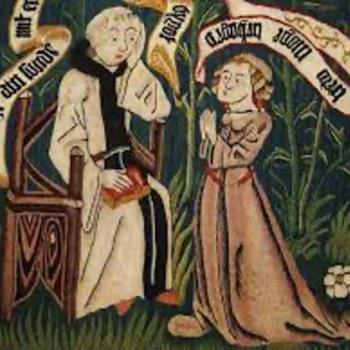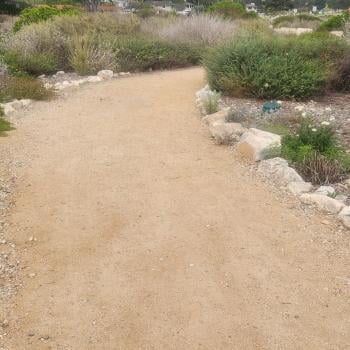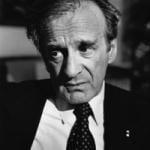Well into the early modern period, some histories of the world written by Europeans started the story way back—in the garden of Eden. Not just church history, but what passed as universal histories, might start with the creation of the world.
Nor is it strange for historians to consider their discipline a science, with human experience, like energy and matter, subject to scientific laws. George Bancroft, nineteenth century U.S. historian who sought the roots of American liberty in Teutonic forests and in Luther’s Reformation, addressed these words to the American Historical Association in 1886:
The movements of humanity are governed by law. It is true that the sparrow, when the time comes for its fall to the ground, obeys a law that pervades the Kosmos; and it is equally true that every hair in the bead of a human being is numbered. The growth and decay of empire, the morning lustre of a dynasty and its fall from the sky before noonday; the first turning of a sod for the foundation of a city to the footsteps of a traveller searching for its place which time has hidden, all proceed as it is ordered. The character of science attaches to our pursuits.
So Big History, the curriculum pioneered by David Christian, professor at Macquarie University in Australia, is not altogether without precedent. Christian’s approach has become popular through The Great Courses series, a TED talk, and a free online version. As Andrew Ross Sorkin’s recent article in The New York Times reported, the course also has gotten a big boost from a big booster, Bill Gates. Gates is investing cash and influence in efforts to get Big History taught in American high schools.
Big History goes world history one better: not just an effort to see how one country fits into the world, but how our world fits into the universe. Christian’s narrative moves across eight “thresholds,” from the Big Bang to the rise of agriculture, cities, states, and industry. He observes that complexity renders living organisms vulnerable, and that fossil fuels and collective learning underwrite humans’ current accomplishments. He credits the Annales school, a twentieth-century French approach prioritizing broad movements, geography, communication, and social groups, as inspiring his historical method.
While admitting the curriculum’s appeal, the Times piece remained leery of a history program paid for by Gates. Sorkin’s article surveyed disaffection among educators over the Gates Foundation’s advocacy of the Common Core, and quoted some concerns of NYU’s Diane Ravitch: “When I think about history, I think about different perspectives, clashing points of view. I wonder how Bill Gates would treat the robber barons….Bill Gates’s history would be very different from somebody else’s who wasn’t worth $50-60 billion.”
I am leery too. But not because I fear Bill Gates is selling rich-man history; assuming that Gates’s wealth determines his perspective is too simplistic. The problem is that this history is too big to be really rich as history. Way too big, even, to treat robber barons much at all.
Historical inquiry can distort by going too narrow, by looking at one place, person, nation, or event without appropriate consideration of context. But going too wide also distorts understanding of human events. Attempting to cover so vast a stretch of space and time obscures understanding of contingent human actions. Human beings and decisions are minimized, flattened, by that kind of scope. Furthermore, as social historians recognize, a key element of any big story is the range of small stories it contains. Particular things happen for particular reasons, reasons that require close scrutiny of circumstances, personalities, social conditions, ideas, inventions, elections.
Big History exhibits an earnest faith in the “underlying unity of modern knowledge”: no fretting over a war between science and religion or between the feuding two cultures of science and the humanities. The program’s advocates are right to fault high school curricula that give students no way to put together different types of learning. The Times article quotes Big History project advisor Bob Bain: “Most kids experience school as one damn course after another; there’s nothing to build connections between the courses that they take….The average kid has no way to make sense between what happens with their first-period World History class and their second-period algebra class, third-period gym class, fourth-period literature — it’s all disconnected.” It’s flattering that history should be counted as the framework for organizing all knowledge, history becoming a sort of queen of the sciences. Except it’s not really history. And in case history teachers feel smug about the honor of providing the organizing framework, consider that the popular appeal of Big History may reside in Christian’s claim to deliver all 13.8 billion years in 18 minutes, or a few lessons: whew, got that out of the way.
After all, it’s astronomy, geology, chemistry, and biology that take us through most of those billions of years, not something methodologically recognizable as history. Science and history can intersect: environmental historians long have regarded reciprocal relationships of nature and human activity, and the history of science deserves a much more prominent place in high-school curricula than it commonly receives. Further, you might argue that the job of a whole liberal arts education is to provide appropriate links, as environmental historian William Cronon ventures in his fine essay, “Only Connect.”
But in presenting as history a layperson’s dose of origins and astronomy, the program seems mostly atuned to finding uses of history for life. As the final section of the online course asks, “What does 13.8 billion years of history tell you about yourself? How does knowing so much about the past change the way you think about the future?”
Answers may vary.












